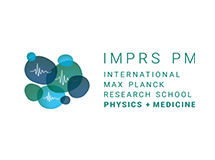Where is animal research carried out in Germany?
No animal research for cosmetics and detergents
In Germany, animal research is primarily carried out in the areas of basic research, medicine and veterinary medicine. Animal research can also be required to identify factors that pose a risk to the environment. The toxicity of chemicals is also investigated using animal research. It is a legal requirement that all active substances are tested in animal experiments for effectiveness and side effects. There are therefore no drugs without animal research. In addition, animal testing may be required for the detection of environmentally hazardous effects. The toxicity of chemicals is also checked by animal experiments. Cell cultures, artificial tissues and organs are increasingly being used for this, but they cannot yet replace tests on a complete organism.
As opposed to this, animal research is prohibited in Germany for the development of cosmetics and hygiene products, for example detergents, and for armaments research. Imports of such products are also prohibited if they have been tested on animals. Nonetheless, cosmetics may contain components that were tested on animals, for example if a substance they include was originally developed for a different purpose and safety testing of the substance on animals was a legal requirement.
Animal experiments in basic research
Scientists working in the area of basic biomedical research need animals if there are no alternative methods to animal research available or if corresponding research cannot be carried out on humans for ethical reasons. However, the Max Planck Society has undertaken to promote alternative methods and to finance their development. Its scientists carry out research using alternatives like stem cell cultures, computer models and imaging techniques, for example magnetic resonance imaging. Despite this, however, the use of laboratory animals in basic research will continue to be indispensible for the foreseeable future.
Opponents of animal experiments and animal protectionists criticize animal experimental research, questioning whether research findings from animal experiments can be transferred to humans. They argue that mice, rats, and monkeys are too different from humans to enable data from animal models to be extrapolated to humans. But no matter how different the various animals used in research may be, they all share a common evolutionary history with humanity. This is why 95 percent of the genes of a mouse occur in humans in similar form. Zebrafish share about 70 percent of human genes. As a result, animal experiments can provide important indications as to whether a new substance is effective, and what side effects it might have. There are many examples of the transferability of results from mice or monkey experiments to humans. However, since mice and fruit flies naturally also differ from humans, each new active substance must also be tested in clinical trials on a large number of voluntary human subjects.
Without animal experiments there would therefore be no drugs that are demonstrably effective. As a consequence, animal research presents an ethical dilemma for scientists: the potential benefits for humans and the harm to the animal and other pros and cons must be carefully weighed up against each other. The Max Planck Society’s scientists, vets and animal keepers take their responsibility in relation to the implementation of animal research and the provision of species-appropriate facilities for laboratory animals very seriously – not least because valid research findings can only be obtained from healthy and stress-free animals. All Max Planck employees who work with animals will be obliged to participate in a seminar on animal ethics in future.
The Max Planck Society would like to avail of its scientific expertise to improve animal welfare at its Institutes. Max Planck scientists will study the cognitive abilities of different animal species and behavioural expressions that are indicative of suffering or stress. It is also planned to carry out more research on animal sentience and intelligence. The researchers aim to use the insights gained from this work to plan future animal research in a way that causes less strain on the laboratory animals. It is also planned to place greater emphasis on the preferred living conditions of the animals. In this way, the Max Planck Society aims to ensure, for example, that laboratory animals are kept in conditions that take the social life of their species into account.
Definition of animal research
Animal research includes interventions or treatments for experimental purposes that can involve pain, suffering or harm for an animal. Interventions involving an organism’s genome are also classified as animal research if they could cause pain, suffering or harm to the organism. This definition extends to all animal species, from worms and insects to mammals.
Research on mammals must be authorized if it could impair the animal’s well-being. The Federal Ministry of Food and Agriculture publishes statistics on animal research carried out in Germany annually. The Max Planck Society also publishes annual data on the number of laboratory animals kept at its Institutes the previous year.
Animals at the Max Planck Institute for the Science of Light
At the Max Planck Institute for the Science of Light live zebrafish. Animal keepers look after their well-being, and a veterinarian is on hand to advise them. The conditions in which the zebrafish are kept are based on the animals’ natural needs, the scientific requirements and practical dictates. For the scientific results obtained from the research to be globally comparable, the keeping of laboratory animals is largely based on standardized principles.
Those responsible for the animals refer to the latest scientific insights in their work and adapt the holding conditions accordingly when this is technically feasible and does not contradict the scientific requirements. They also ensure that the legal requirements in relation to the planning and implementation of animal research and the keeping of the animals are complied with.
Zebrafish are very transparent, which means that the optical methods developed at MPL, such as optical diffraction tomography and Brillouin microscopy, can be used to carry out physical measurements in living and intact animals for which it was previously necessary to kill and dissect animals. Research at MPL therefore directly contributes to the fact that in future fewer animals will have to be killed for experimental purposes.
Why do animal research at all?
A major goal of basic research at MPL is to understand the complex interaction of biophysical and biochemical processes at the molecular, cellular and tissue levels, which are the basis for e.g. the circulation and migration of cancer and immune cells or successful spinal cord regeneration. The Guck Division is investigating the zebrafish's amazing ability for functional spinal cord regeneration in order to develop an understanding of the underlying processes. The insights gained from this research will in future form the basis for the development of novel therapies for humans.
Please find more information at the Portal: Animal Studies of the Max Planck Society. The Declaration of principle on animal research is also available there.





